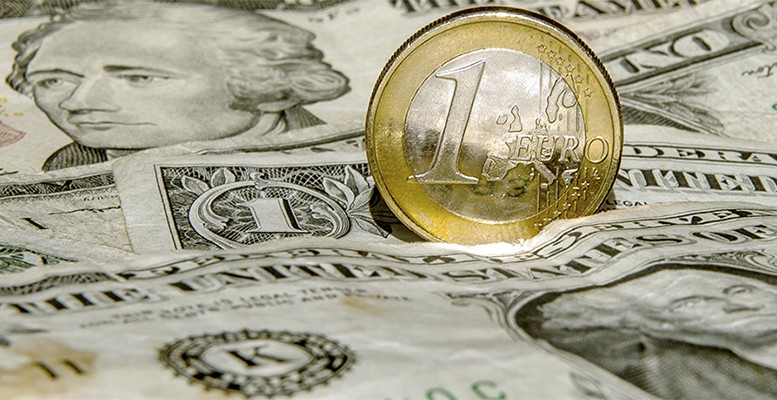Where the euro may go in 2018 is such a central question and will have implications for global asset markets around the world. Christopher Gannatti, head of research at Wisdom Tree, thinks that “forecasting currencies is very much like putting together a puzzle”, at times requiring just as much art as data.
To help in developing a framework to think about where the Euro may go in 2018, analysts at the firm first stepped back and looked at the relative performance against the US Dollar for the last ten calendar years, as well as during the first half of 2018.
Figure 1: Performance of the Euro vs US Dollar through the years

Source: Bloomberg. Periods are calendar years, beginning 31 December 2007 to 29 June 2018. You cannot invest directly within an Index. Historical performance is not an indication of future performance and any investments may go down in value.
- 2014 and 2015 were the primary years of Euro depreciation (or Dollar strength). At the end of 2015, we saw a level of $1.08, which, for context compares to $1.37 at the start of 2014
- 2017 was a standout year for Euro appreciation—over the last ten years we did not see anything close to that type of positive move. Global investors were very surprised in 2017 by the Eurozone’s quite strong economic activity, and many were speculating that the European Central Bank (ECB) might have to stop their easing program earlier than planned
The first half of 2018 ended with the Euro at a level of about $1.17, as of 29 June 2018.
Three Important Pieces of the Currency Puzzle
There are three concepts that experts at Wisdom Tree tend to look at when attempting to forecast currencies.
It’s important to note that there are many ways to look at these characteristics and that none of them tells us exactly what the Euro will do.
Concept 1: Momentum
While there are many ways to look at momentum, analysts at the firm focus on the 10-day versus the 240-day moving average (MA).
Figure 2: Reading the currency trend

Source: Bloomberg. Data is from 31 December 2007 to 29 June 2018. You cannot invest in an Index. Historical performance is not an indication of future performance and any investments may go down in value.
- If the 10-day MA is below the 240-day MA, this means the Euro is in a depreciating trend. These periods are highlighted in grey in Figure 2
- Conversely, if the 10-day MA is above the 240-day MA, this means the Euro is in an appreciating trend. These periods are not highlighted
Currencies have historically exhibited trending behaviour, and it’s useful to know the trend and think about potential catalysts that could cause it to change in the future. Currently this points more towards further depreciation of the Euro.
Concept 2: Purchasing Power Parity, is the currency cheap or expensive?
Many have heard of the “Big Mac Index” from the Economist—the concept being that a McDonald’s Big Mac, after adjusting for exchange rates, should cost the same around the world.
Since this is rarely the case in reality, we can say that currencies are either “too cheap” or “too expensive” relative to each other, thereby inhibiting the similar pricing of substantially the same goods in different global markets.
The current Euro exchange rate (around $1.17 as of 31 May 2018) is very similar to the level that purchasing power parity says it should be. This is a trickier concept—a currency can stay too cheap or too expensive for extended periods. We’d indicate that this signal is basically neutral today.
Concept 3: Shifting Interest Rates
- 2-Year rates, being on the shorter end, are much more influenced by monetary policy. The US Federal Reserve has been raising rates, whereas the ECB has indicated it will not raise rates for a period of about 12 months. The US 2-Year has extended its yield advantage over the German 2-Year from about 2.5% to 3.2% thus far in 2018.
- 10-Year rates, being on the longer end, are more influenced by inflation and growth expectations. In 2018, the US 10-Year has extended its yield advantage over the German 10-Year from about 2% to about 2.5% thus far in 2018.
Figure 3: Comparison of 2-Year and 10-Year interest rates between US and Germany

Source: Bloomberg. Periods is from 29 December 2017 to 29 June 2018. You cannot invest directly within an Index. Historical performance is not an indication of future performance and any investments may go down in value.
In theory, global investors appreciate higher yields over lower yields, so this would point to the potential for Dollar appreciation (Euro weakness) going forward.





